Two new tropical cyclones developing in Eastern Pacific
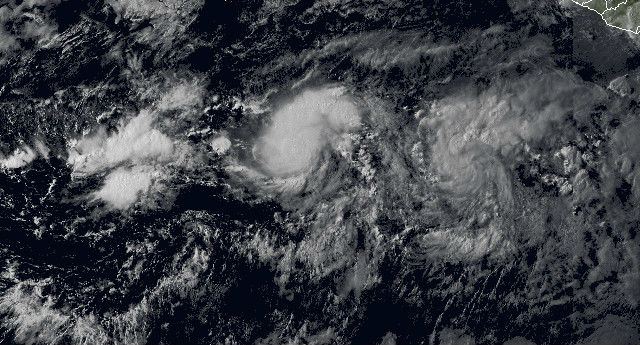
While Tropical Storm Flossie moved into Central Pacific waters and crossed Hawaii bringing power outages and widespread flooding, new tropical disturbances are taking place in Eastern Pacific. Sufficiently warm waters, weak shear and a moist atmosphere make favorable conditions for tropical development in Eastern Pacific.
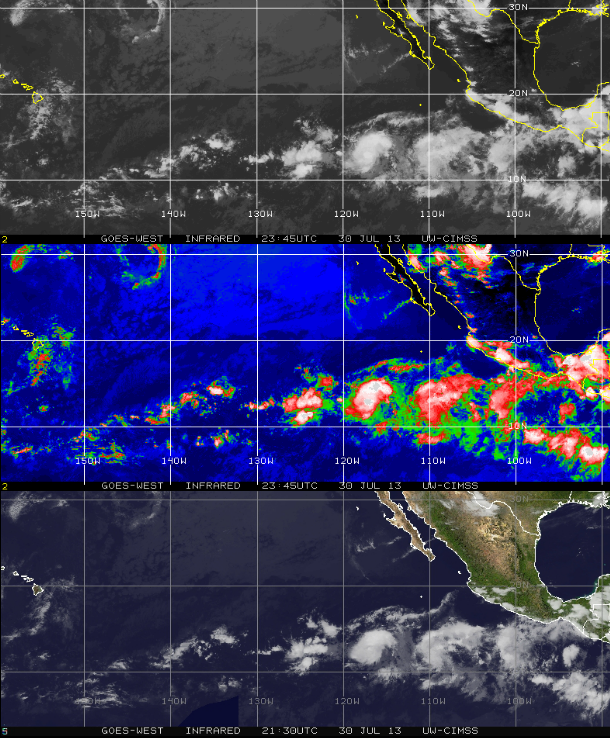
GOES West Infrared imagery from late July 30, 2013 (Credit: NOAA/GOES/CIMSS)
Tropical Depression 7E developed into Tropical Storm Gil late on July 30, 2013 and is now located 454 nm SW of Socorro Islands. It is moving west-northwestward at speed of 13 knots. Maximum sustained winds are 45 knots with higher gusts. Tropical-storm-force winds extend outward up to 35 miles (55 km) from the center.
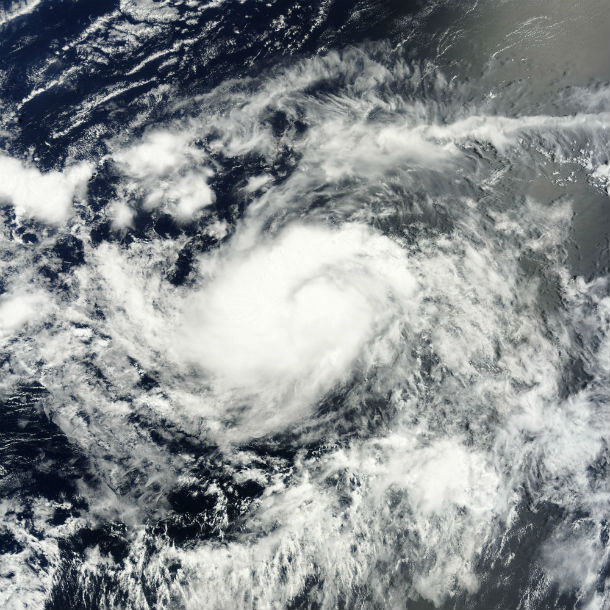
MODIS satellite image of Tropical Storm Gil captured at 18:12 UTC on July 30, 2013 (Credit: NASA/MODIS Rapid Response System)
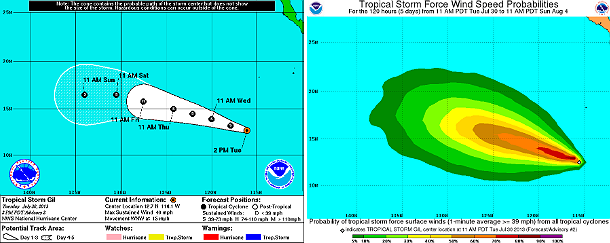
NHC forecast track map and tropical storm force wind speed probability map (Credit: NOAA/NHC)
System's minimum central pressure is 1005 Mb (29.68 inches). The US National Hurricane Center (NHC) noted that it could later become a hurricane. TS Gil is located in the Inter-tropical Convergence Zone or ITCZ, but has plenty of moisture and is over warm sea surface temperatures that will help it strengthen over the next couple of days.
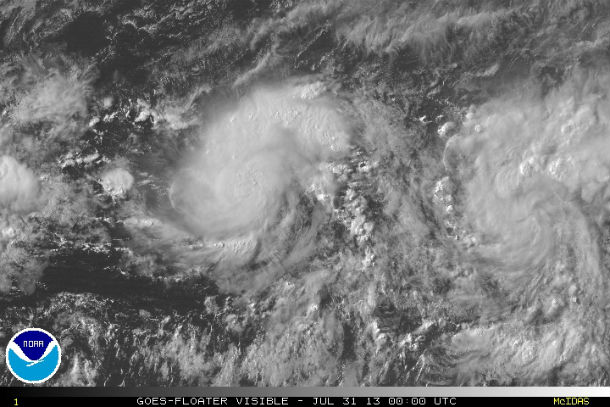
GOES West visible satellite image taken at 00:00 UTC on July 31, 2013 (Credit: NOAA/GOES)
Another low pressure system located about 750 miles south of the southern tip of Baja California peninsula continues to become better organized as well. It is expected to become a tropical depression in the coming hours. NHC forecasters estimate a high 60% chance of becoming a tropical cyclone during the next 48 hours as it moves westward at speed of 10-15 mph. When the system reach tropical storm force winds it will be named Henriette.
.png)
NHC's Eastern Pacific tropical activity overview map (Credit: NOAA/NHC)
Featured image: Tropical disturbances in Eastern Pacific on July 30, 2013 (Credit: NASA/BlueMarble/WeatherUnderground)

Commenting rules and guidelines
We value the thoughts and opinions of our readers and welcome healthy discussions on our website. In order to maintain a respectful and positive community, we ask that all commenters follow these rules:
We reserve the right to remove any comments that violate these rules. By commenting on our website, you agree to abide by these guidelines. Thank you for helping to create a positive and welcoming environment for all.